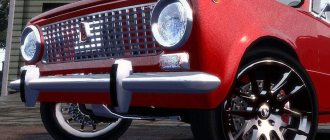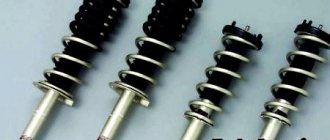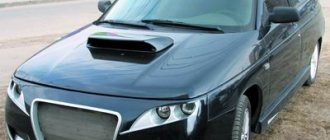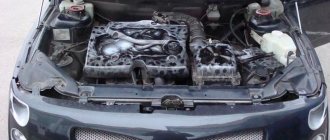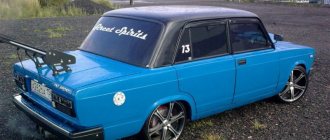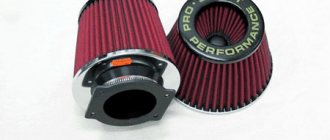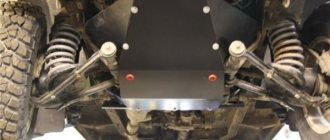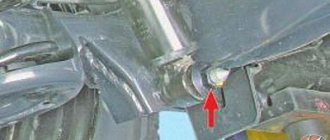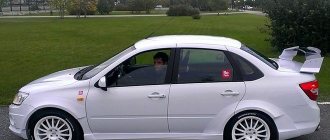How to increase engine power on “classic” VAZ models
The VAZ 2101, 2103-06 or Niva models, well known in the CIS, are usually called “classics”. The power units on these machines are carburetor and today are very outdated, however, given their prevalence, there are many who want to modify these internal combustion engines.
The result may be boosting the engine to 110-120 horsepower. There are even examples with a power of about 150 hp. (depending on the quality and depth of modifications). In this article we will look at how to increase the engine power of a VAZ classic.
Description of technical parameters, wiring diagram
Engine VAZ 2103
Technical characteristics of the VAZ 21063 differed from the popular classic car VAZ 2106. The vehicle body is a 4-door sedan, the capacity of which is 5 people. A low-power 1290 cc engine is installed. cm and a power of 64 liters. With. at 5600 rpm. The power system is presented in the form of a carburetor, and the preferred gasoline is with an octane rating of 92.
The VAZ 21063 has a 4-speed gearbox and is a rear-wheel drive model. The model has rear drum brakes and front disc brakes. The car's wheelbase is 2424 mm, height 1440, width 1611 mm, total length 4166 mm. The weight of the car with standard equipment is 1035 kg, the maximum permissible total weight of the car is 1435. Tires of size 170-70 with a diameter of 13 are used.
The trunk volume is 345 liters. The technical characteristics of model 21063 allow it to reach a maximum speed of 145 km/h, while the car accelerates to 100 km in 18 seconds. The VAZ family comes mainly with a single-wire electrical circuit. Consequently, all negative terminals are connected to the ground of the car, they, in turn, perform the function of a second wire. In a VAZ 21063 car, the wiring is done as follows:
- activation of electrical circuits occurs through the ignition switch;
- the battery is connected through the fuse box to electrical mechanisms responsible for safety;
- The housings of the main components themselves are conductive.
When dismantling parts from the car, it is worth removing the negative terminal from the battery. This should be done to avoid short circuits caused by touching a metal tool.
Increasing the displacement of the VAZ engine
As you know, one of the most important parameters in relation to internal combustion engines is the working volume. The engine’s power, throttle response, etc. depend on the volume of the engine.
It is more comfortable to operate a more powerful car, since the reserve of torque and power allows you to not “turn” the engine too much, since acceptable traction appears at lower speeds.
When it comes to increasing working volume, there are two main ways:
These methods are actively practiced for tuning AvtoVAZ serial engines, which are found under the hoods of different models. More precisely, we are talking about the very first engine on the “penny” 2101 with a power of 60 hp. or the “eleventh” engine 21011, and the VAZ 2103-06 power unit with a power of 71-75 hp. Also, do not forget about the carburetor 80-horsepower 1.7 liter engine on the Niva model and other modifications of the above-mentioned internal combustion engines.
So, let's look at a specific example. If you have a VAZ 2101 engine, you can bore the cylinders to 79 mm, and then install pistons from the 21011 engine. The working volume will be 1294 cm3. To increase the piston stroke, you need to have a crankshaft from 2103 so that the stroke is 80 mm. Then you will need to purchase shortened connecting rods (by 7mm). As a result, the volume will be 1452 cm3.
It is quite obvious that if you bore the cylinders and at the same time increase the piston stroke, the end result will be a “penny” engine volume, which will be 1569 cm3. Note that similar operations are carried out with other motors on “classic” models.
It is also important to consider that after installing a different crankshaft and increasing the piston stroke, the compression ratio increases, which will require the use of gasoline with a higher octane number. Additional adjustments to the compression ratio may also be necessary. The main thing is to choose the right shortened pistons, connecting rods, etc.
We also add that the simplest and cheapest method can be considered boring for repair pistons. However, even if the block is bored to the last repair size, the volume increases by no more than 30 “cubes”. In other words, you shouldn’t count on a significant increase in power in this case.
Restoring the functions of the power unit
To eliminate identified malfunctions and repair the VAZ 2103 engine, you must perform the following operations:
Related Posts
Replacing (removing and installing) the cylinder head with your own...
Tire welding saves money on tires
Replacing valve seals yourself
The VAZ 2103 valves are adjusted in accordance with the instructions; the diagram and description are in the vehicle documentation. Failure to make adjustments can lead to increased fuel consumption, reduced power of the power unit and complete burnout of the valves.
If do-it-yourself repairs do not give the expected results, as well as if other malfunctions occur, it is necessary to carry out a thorough diagnosis and subsequently repair the engine at specialized car service stations.
Qualified technicians at special stands and using modern equipment will accurately determine the causes of engine failure and carry out high-quality repairs of the 2103 engine.
Other engine modifications: intake and exhaust
If you take into account the recommendations of experts, in order for the engine to turn out to be resourceful, you should not strive to increase its volume beyond the 1.6 liter mark. An increase in volume above this figure will mean that the engine becomes “heavier” and spins less intensively.
The next step will be to upgrade the exhaust ports and valves. The channels are polished and the valves can even be replaced. For example, a suitable option is selected (it can also be from a foreign car), after which the valve stems are processed to the dimensions for a VAZ engine.
The valve plates should also be processed at the same time. It is important to adjust all valves according to weight. Separately, it is worth approaching the issue of installing the camshaft. In order for the engine to pull well from the bottom and at high speeds, it is optimal to select a camshaft that provides high valve lift. At the same time, a split gear is also required for precise adjustment of the valve timing.
Six body dimensions and their verification
What does FSI engine mean? Features, repair, maintenance
VAZ 2106 geometric dimensions of the body
There is a concept of car body size. Along with this, it is customary to talk about geometric dimensions, which imply control standards and distances, the geometry of door and window openings, the distance between axes and much more.
As a rule, a car that has been in an accident is checked for displacement of the main body elements
Particular attention is paid to the following body parts:
- Diagonals. The car is driven onto the overpass, and then the distance from one extreme point of the floor to the other is checked diagonally using a tape measure. If there is a discrepancy between the distances on one side and the other, there is movement of the body;
- Racks. They are subject to mandatory verification. First of all, if the car has been in an accident, the whole side, not damaged, is diagnosed, and only then the damaged side.
- Roof. To make sure that the roof is not leaking, you need to measure the dimensions of the doorways diagonally. The dimensions, of course, must match on both sides;
- Glass. The conformity of the windshield and rear windows is checked. Both are measured diagonally.
VAZ 2106 control body dimensions
What's the result?
As you can see, engine tuning, including classics, in terms of the scope of work largely affects the BC and cylinder head. However, we should not forget that the carburetor will also need tuning. It is not surprising that a forced engine requires more gasoline and air, that is, the carburetor also needs to be upgraded and tuned.
As for the parts for the internal combustion engine, everything will depend on the specific tasks. If the budget allows, it is best to install special connecting rods, replace cast pistons with forged ones, replacing bearings, etc. is also recommended.
Finally, I would like to add that if all the work is done correctly, then even a significant increase in engine volume does not greatly affect fuel consumption. Moreover, consumption may drop. The fact is that better traction, elasticity and throttle response of the engine after modifications allow you to spin the power unit less in lower gears for acceleration and maintaining the usual driving pace.
The main thing is to correctly configure the carburetor and ignition system, taking into account the changed working volume of the internal combustion engine. As a result, a forced engine increases the operating comfort of the vehicle, and the procedure itself is often cheaper than swapping an engine or, moreover, installing a turbocharger on a carburetor with minimal modifications to an existing power unit.
Possibility of installing a turbocharger on an engine with a carburetor. The main advantages and disadvantages of turbocharging on a carburetor car.
Refinement and modernization of the carburetor. The main disadvantages of the carburetor injection system and how to eliminate them, settings. Intake manifold tuning.
Boosting the engine. Pros and cons of modifying an engine without a turbine. The main methods of boosting: tuning the cylinder head, crankshaft, compression ratio, intake and exhaust.
Repair+tuning of VAZ-2103 engine
| Previous topic :: Next topic | |
| Author | Message |
| Pat Oriental Smoothie | |
Registered: 02/21/2006 Messages: 6816 From: Tambov
The rockers were in a similar state - the convex contact surface became concave. Measurement of pistons and cylinders revealed the following: Piston size - 76.33 mm Minimum cylinder diameter - 76.36 mm Maximum cylinder diameter - 76.40 mm. Thus, it is clear that the wear of the ShPG would allow the engine to be used for a long time (the maximum piston-cylinder gap should be no more than 0.15 mm), but since the patient is opened, we will “sew up” it correctly. I would also like to draw attention to the craftsman’s crookedness - the ShPG was assembled with a piston-cylinder gap of 0.03 mm, with an acceptable range of 0.05 - 0.07 mm. Because of this, all pistons have traces of thermal “sticking” in the form of black stripes.
Required: assemble an engine with maximum reliability, wear resistance and a minimum budget, preparing it for transporting a trailer along the highway in a VAZ-2104. In short, you need a tractor. Therefore, we will modify it for low and medium speeds. The only modification option for such specifications is to increase the compression ratio and select the camshaft. A 2130 crankshaft with an increased stroke of 84 mm (standard is 80 mm) would fit well into this modification concept, but, unfortunately, the reduced budget does not allow us to spend an extra 10 kilo rubles.
To begin with, I will conduct a small educational program on the use of measuring equipment using the example of measuring the piston-cylinder gap using a micrometer and bore gauge. Otherwise, more and more often there are “masters” who do not know how to use them. Before each series of measurements, the micrometer must be adjusted to zero. To do this, use the setting measure that comes with the micrometer. When taking measurements, the micrometer must be turned only by the ratchet, which guarantees the same measuring force (7-9 N).
After this, we measure the diameter of the piston at a certain distance from the piston bottom. As a rule, on most pistons this level is located on the underside of the piston pin hole.
Using a bore gauge, you can measure the absolute size of the hole, as well as the shaft-hole gap directly. To measure the diameter of a hole, you need to set the bore gauge to a micrometer. We set up the micrometer as we did before, set the nearest size of interest, for example 76.40 mm, and fix the micrometer.
We insert the bore gauge into the micrometer and adjust the bore gauge indicator scale so that the zero of the indicator corresponds to the minimum value obtained when rocking and rotating the bore gauge relative to its axis.
After this, we insert the bore gauge into the cylinder and, shaking it relative to the cylinder axis, remember the maximum deviation of the indicator to the right. We subtract the measured value from 76.40 and obtain the value of the absolute diameter of the cylinder at a given depth and in a given direction. For the 2103 engine, we measure the absolute diameter of the cylinder in two directions - perpendicular and along the axis of the cylinder block - at a depth of 5, 15, 45, 80 mm.
To directly measure the clearance between the piston and cylinder, it is necessary to measure the diameter of the piston with a micrometer and set the bore gauge to zero according to the measured value. After adjusting the bore gauge in this way, the indicator deviations when measuring the cylinder will show the relative piston-cylinder clearance.
Registered: 05/05/2010 Messages: 17643
Registered: 02/21/2006 Messages: 6816 From: Tambov
Added after 2 hours 45 minutes 15 seconds:
Let's start work by preparing the cylinder head (some of the material is taken from my other article on engine modification, so the photos may be with a different head, but the meaning remains the same). We disassemble the head, leaving the guide bushings. First of all, it is necessary to modify the combustion chamber. To do this, place the cylinder head gasket on the head and trace its outline in the area of the intake valve.
Next, you need to outline the contour of the dead zone. To do this, cut out a circle with a diameter of 49 mm from paper and glue it concentrically onto the valve plate.
We insert the valve into the guide and trace the dead zone along the contour
As a result, we get a dead zone contour that needs to be removed
To modify the combustion chamber, it is convenient to use a set of metal cutters
When modifying the combustion chamber, it is necessary to insert two adjacent intake valves to avoid damage to the seats.
As a result, we get a modified combustion chamber. It is not necessary to remove metal around the exhaust valve in the same way, because its capacity is quite sufficient. Also, do not cut out the “earring” around the intake valve too much, because this only reduces the compression ratio and does not increase flow capacity because the dead zone for standard valves is within 5-6mm of the valve edge.
For engines 2101 and 2103 with a piston diameter of 76 mm, such modification of the combustion chamber is impossible, because The gasket fits close to the edge of the combustion chamber.
Registered: 05/05/2010 Messages: 17643
Registered: 01/16/2008 Messages: 4030
Added after 1 minute 48 seconds:
Registered: 02/21/2006 Messages: 6816 From: Tambov
Added after 45 minutes 58 seconds:
The next stage is pressing out the guide bushings. It is convenient to press out and press in using a special screw puller. In this case, there is no need to heat the head, which leads to curvature of its plane, and there will be no shock loads on the guide, which often leads to the chipping of the seat under the oil cap or a crack in the bushing.
The next step is boring the intake manifold and cylinder head channels. For this engine, as already mentioned, there is no need to bore the cylinder head channels, but the intake manifold channels need to be increased to 30 mm. We refine the channels using special ball cutters with a step of 1 mm.
Boring the intake manifold channels is much more difficult than boring the cylinder head channels, because the manifold consists of more viscous aluminum, which is difficult to machine with a milling cutter, and the curvature of the channels 1 and 4 of the cylinder adds problems when boring. However, it is necessary to go through these channels completely so that the 30 mm cutter can freely pass through the entire channel. For this, a long wrench is used, and modification is carried out on both sides of the collector.
After boring the intake manifold channels, it is necessary to align the manifold and cylinder head channels. To do this, apply graphite lubricant to the commutator plane, place the commutator on the cylinder head studs and press firmly. After this, fingerprints remain on the manifold and cylinder head, which show channel mismatches.
Using metal cutters to a depth of 2-3 cm, we smoothly remove the steps in the manifold and cylinder head.
The exhaust manifold is connected to the cylinder head in the same way. In this case, it is necessary to take into account the direction of gas flow. For the intake tract, we bore the channel in the head a little more than the channel in the manifold. For graduation it’s the other way around. The main thing is that there are no steps in the path of gas movement. There is a lot of debate on the Internet about the need to polish canals. Let's leave this question in the category of “religious” - as you like. If you have the desire and time, please. Personally, I have never done polishing, so I can’t give any pros and cons of this action in practice. But my opinion is that the channel should still have some roughness. In principle, it is enough to process the channel with fine-grained sandpaper wound around the hose from the vacuum brake booster on a drill.
After finalizing the channels, you can begin preliminary assembly of the head.
Registered: 06/10/2009 Messages: 218 From: USSR
Registered: 02/21/2006 Messages: 6816 From: Tambov
Before inserting the guide bushings into the head, it is necessary to measure the diameter of the guide bushing and the hole in the cylinder head for the guide using a micrometer and bore gauge, and select the bushings for the holes so that the interference fit during fit is at least 0.02 mm.
Select a reamer of the required diameter and unroll the hole in the bushing
We double-check the diameter of the resulting hole using a bore gauge.
Registered: 12/14/2006 Messages: 14359 From: Chicherina
Registered: 02/21/2006 Messages: 6816 From: Tambov
Registered: 12/28/2007 Messages: 14010 From: Tambov
Registered: 11/23/2009 Messages: 762
Registered: 12/25/2007 Messages: 9016
Registered: 09/17/2011 Messages: 13691 From: Hyperborea
Registered: 02/21/2006 Messages: 6816 From: Tambov
Registered: 10/06/2011 Messages: 102641 From: Tambov
Registered: 02/21/2006 Messages: 6816 From: Tambov
Registered: 09/17/2011 Messages: 13691 From: Hyperborea
Registered: 02/21/2006 Messages: 6816 From: Tambov
Registered: 10/06/2011 Messages: 102641 From: Tambov
Source
Technical characteristics 2106. General data
Engine 2103 1.5l
Fig.2.1. Main overall dimensions (reference) of the VAZ-2106 car.
| Technical characteristics of cars of the 2106 family | |||
| Indicators | VAZ-2106, VAZ-21065 | VAZ-21061, VAZ-21065-01 | VAZ-21063 |
| Total information | |||
| Number of seats including driver | 5 | ||
| Curb weight, kg | 1035 | ||
| Total weight, kg | 1435 | ||
| Overall dimensions, mm (length x width x height) | 4166x1611x1440 | ||
| Maximum speed, km/h: with full weight with one passenger | 148 150 | 148 150 | 143 145 |
| Acceleration time from standstill with gear shifting to 100 km/h, s: with full weight with one passenger | 17,5 16 | 19 17 | 21 19 |
| Smallest turning radius along the track of the outer front wheel, m | 5,6 | ||
| Maximum climb overcome by a vehicle with full weight without acceleration in first gear, % | 36 | ||
| Engine | |||
| Model | 2106 | 2103 | 21011 |
| Type | four-stroke petrol carburetor | ||
| Number and arrangement of cylinders | Four in a row | ||
| Cylinder diameter x piston stroke, mm | 79×80 | 76×80 | 79×66 |
| Cylinder displacement, cm³ | 1569 | 1458 | 1295 |
| Compression ratio | 8,5 | ||
| Rated power at crankshaft speed 5600′ min-¹, kW (hp): according to GOST 14846 according to DIN 70020 | 55.5 (75,5) 56.6 (77,0) | 53.3 (72,5) 54.4 (74,0) | 47 (63,5) 48 (65,0) |
| Maximum torque at crankshaft speed 3400" min-¹, N m (kgf m): according to GOST 14846 according to DIN 70020 | 116(11,8) 118(12,0) | 104(10,6) 106(10,8) | 93 (9,5) 95 (9,7) |
| Cylinder operating order | 1-3-4-2 | ||
| Transmission | |||
| Clutch | single-disc dry with central pressure spring; hydraulic clutch release drive with servo spring on the pedal | ||
| Transmission | mechanical three-way four-speed with synchronizers in all forward gears | ||
| Gearbox ratios: first gear second gear third gear fourth gear reverse | 3.24 (3,67) 1,98(2,10) 1,29(1,36) 1,00(1,00) 3,34 (3,53) | 3,75 (3,67) 2,30(2,10) 1,49(1.36) 1,00(1,00) 3,87 (3,53) | 3,75 (3,67) 2,30(2,10) 1,49(1,36) 1,00(1,00) 3,87 (3,53) |
| Cardan transmission | two shafts with an intermediate elastic support, connected to the gearbox shaft with an elastic coupling; two rigid universal joints at the ends of the rear shaft have needle bearings | ||
| main gear | conical hypoid | ||
| Main gear ratio"' | 4,1 (3,9) | 4,1 | 4,1 (4,3) |
| Chassis | |||
| Front suspension | independent wishbone with coil springs, telescopic hydraulic shock absorbers and anti-roll bar | ||
| Rear suspension | dependent rigid beam connected to the body by one transverse and four longitudinal rods, with coil springs and telescopic shock absorbers | ||
| Wheels | disk, stamped | ||
| Rim size | 127J-330 (5J-I3) | ||
| Tires | chamber, radial 165/80 R13 or 175/70 R13 | ||
| Steering | |||
| Steering | injury-proof | ||
| Steering gearbox | globoidal worm with double-ridge roller, gear ratio 16.4 | ||
| Steering gear | three-link, consists of one middle and two lateral symmetrical rods, bipod, pendulum and swing arms | ||
| Brakes | |||
| Service brakes: front rear | disk drum with self-centering shoes, with automatic restoration of the gap between pads and drum, with rear brake pressure regulator | ||
| Service brake drive | foot hydraulic double-circuit, with vacuum booster | ||
| Parking brake | manual with cable drive on the brake pads of the rear wheels | ||
| Electrical equipment | |||
| Electrical wiring system | single-wire, the negative pole of the current sources is connected to ground | ||
| Rated voltage, V | 12 | ||
| Accumulator battery | capacity 55 Ah at 20-hour discharge mode | ||
| Generator | AC with built-in rectifier, output current 42 A at 5000 min-¹ | ||
| Starter | with electromagnetic traction relay and freewheel, power 1.3 kW | ||
| Spark plug | A17DV, A17DVRM, BRICK L15Y, NGK BP6ES | ||
| Body | |||
| Model | 2106 | ||
| Type | all-metal monocoque four-door sedan |
NOTE For differences in the VAZ-21065 car, see page 10. ' For engine 2106 at a crankshaft speed of 5400 min-¹ » For engine 2106 at a crankshaft speed of 3000 min-¹ »' In parentheses - for a variant version.
What to build from block 2103?
Prehistory. We have block 2103 (on the car) volume 1.5. Kleno 03, last repair on crankpins. The second repair on the main ones. The pistons now cost 2105 (Kharkov) Stock cylinder head. Carb 083 Solex. After the cold weather, sooner or later the engine will be built.
Recently they thought that the capital cost for spare parts would be approximately 4 thousand hryvnia. Although prices are now rising so much that they may become more expensive. You've listed almost everything that can be done to increase power without cost. Unless you can raise the compression ratio a little, to about 9.2. 9.3 if you drive on 92 gasoline. You can still bore the engine to 1.6, but this is a controversial issue from a resource point of view. Further work on forcing will cost from 1500 UAH and above. I mean replacing the camshaft, etc.
Spraying the crankshaft is a controversial issue; it is not a fact that it will last for a long time.
To avoid creating a topic, I'll ask here. We have a 011 engine, during the last repair we sharpened it to 79, and installed an 05 piston. As I understand it, this is the last repair, then just line it up or is there another way. And what is the volume now, 1.6?!
Clean the mods later, please.
Vadim, a. the volume remained exactly the same. b. sleeve.
Who told you that 05 pistons only come in 79? And there are also 76, there were modifications of engines with a displacement of 1.2, and there were modifications with a volume of 1.3
The block was not sharpened, I know that for sure. Just like the fact that the pistons cost 05.
We have a 011 engine, during the last repair we sharpened it to 79, and installed an 05 piston. As I understand it, this is the last repair, then just line it up or is there another way. And what is the volume now, 1.6?!
We have a 011 engine, during the last repair we sharpened it to 79, and installed an 05 piston.
So they finally didn’t sharpen you, 79 for 21011 is stock!
Maybe you mean it was wasted before the last repair?
from block 03 you can squeeze up to 2 liters!
from block 03 you can squeeze up to 2 liters!
If you replace it with 2130, then of course you can.
So what. I decided this way. Based on the posts written above, I realized that lightweight TRT pistons are available for volume 1.5. This means I use TRT pistons, sharp connecting rods, I simply remove the irregularities from them and sand them with sandpaper on a machine. Knee. send the knee for spraying (as I understand it will still be alive then), balancing the CV, flywheel, hanging connecting rods, pistons, phoezoning the head (and one more thing, maybe it’s worth milling the block too? Give it an even plane. Joining the channels, cutting the channels and polishing them.
RR should be taken with what phases, and how much does it cost, so that it is not too banal like stock, but not too cheerful, you need a motor that is not weak, but it is not built for racing, so consumption is important. What can you do with Solex 83, grind the diffusers a little and polish them?
Source
VAZ 2101 - engine tuning
It is impossible to deceive the laws of physics, chemistry and gravity. Therefore, if you set yourself impossible tasks, you can turn into a lifelong alchemist who extracts port wine from the 1865 vintage from tap water, and removes 200 horsepower from the engine of a classic Lada. This simply physically cannot happen, and when starting to improve the design of the VAZ classic, you need to be aware of this. Of course, the Fiat 124 is not an ideal car, if only because it was modern exactly 50 years ago. Well, a car with a half-century-old design cannot be equal in power and dynamics to a car released in 2009, even if it is such an anachronism as the Priora. Nevertheless, the Fiat engine can surprise.
Content:
How to restore youth to a VAZ 2101 engine
The VAZ 2101 engine tuning of which we started will not, by default, tear up the asphalt underneath. It may growl like a Nissan Z350, but that's about it. And this should be taken as a given. Even if you put a 1966 FIAT 124 and a FORD Mustang of the same year next to each other, you won’t be able to compare their power and purpose by default. We are not going to prove anything to anyone, we are just trying to get as much power as possible out of a 1300 cc engine without affecting the resource too much. The car is not for racing, but for normal life. In light of this, a certain amount of work emerges:
If everything is done correctly and carefully, then the 2101 engine will be able to surprise you with its vigor and dynamics.
Refinement of the cylinder-piston group
Power is not taken from the ceiling, and in order to boost the engine you will have to slightly modify the piston. You can go in two ways - the method of increasing volume or the method of increasing engine productivity due to speed, lightness of parts and balancing. Or you can combine these two methods. In principle, if the task is simply to increase power with little effort, then replacing the power unit with any one from the classics will allow this to be done, since 2101 is the weakest in the family.
Here, a problem with documents may arise when re-registering the power unit. If this issue is overwhelming, then you will have to leave the cylinder block that corresponds to the technical passport. But that’s not a problem either. The fact is that the VAZ 2103 has exactly the same cylinder diameter as the 2101, so it is enough to install a crankshaft from a triple, shortened connecting rods and slightly modify the piston. As a result, even without any witchcraft, we get a triple engine with a volume of almost one and a half liters.
Some numbers
Two sedans: VAZ 2105, -07 and station wagon -04 represented a new line of VAZ classics, which replaced the “penny” generation (2101, -02, -03, -06). The first-born of this family, the 5th model was equipped with three power units:
| The model of car | Engine index | Volume, cm³ | Power, l. With. |
| VAZ 21051 | -2101 | 1200 | 60 |
| VAZ 2105 | -2105 | 1300 | 64 |
| VAZ 21053 | -2103 | 1500 | 75 |
The 2105 engine was intended as a base engine. The weakest one was not particularly popular. The other two units have their supporters and opponents. Some technical characteristics of the “five” engine:
- The cylinder block is cast iron, unlined.
- The arrangement of 4 cylinders is in-line.
- Boring diameter - 79 mm.
- Piston displacement - 66 mm.
- Power* - 64 l. With. (note - at the beginning of the release the number 68 was indicated). Since there were no structural alterations, this was obviously caused by a change in the determination method.
- Torsion torque - 9.5 kgm at 3400 rpm.
- Volumetric compression - 8.8.
- Gasoline consumption AI-92: city - 10.2; track - 6.2; mixed cycle - 7.9.
Crankshaft selection
We won’t touch the nameplate power, since the increase will be symbolic, but it will affect the dynamics. All that remains is to choose a human crankshaft, and this is not an easy task. If you buy a used one, there is a chance that you will run into a shaft with hidden defects - cracks, bending or too much wear. And if the shaft has been restored, then you can end up with poor-quality surfacing of the journals. If you are not sure of the quality of such a crankshaft, it is better to look for a new one. A good quality crankshaft will not shine like chrome.
This is how low-quality shafts made of raw, unhardened steel are prepared for sale. The necks of a good cemented shaft will be matte with a characteristic tint, and it should be packed in oil paper and lubricated with grease. And, of course, with the marking 2103-1005020.
